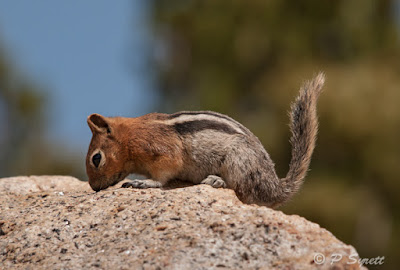Atlantic Puffin
(Fratercula arctica)
This disarming
little bird is everyone’s favourite.
I had seen Atlantic puffins on the Farne Islands, off the coast of
Northumberland, and in the north of Scotland, but the first time I had the
opportunity to photograph them close-up was on a trip to Skomer Island in
June.
Skomer Island is
a ten-minute boat ride from Martins Haven, on the west coast of South
Wales. It is a National Nature
Reserve owned by Natural Resources Wales, and managed by the Wildlife Trust of
West Wales. Small boats transport
up to 250 visitors each day, six days a week, to spend about five hours on the
island. About 15 kilometres of
walking track (6 or 7 km to walk
around the island) keep visitors generally well spread out.
Puffins are
found on the island from mid March to early August during the breeding
season. They build nests in
burrows in grassy banks above the sea cliffs in April and May. Chicks hatch from the eggs in June and
fledge in July, so these two months are the most interesting for visitors. Adult birds are making the finishing
touches to their nests and catching fish to feed their nestlings. Puffins returning with a beakful of small
fish (known as sand eels) are often harried by gulls, which are after an easy
meal.
 |
| With a beakful of nest material |
 |
| With a beakful of sand eels |
The Skomer
Island puffins are very tame, as they are used to visitors walking along a
trail that passes through the centre of one of their main breeding
colonies. They scuttle across the
path on their way from the cliff top to their burrows carrying a beakful of sand
eels or nest material, dodging between the legs of visitors and photographers’
tripods.
 |
| Showing long tongue |
Having such a
deep bill with sharp edges makes it easy for puffins to catch and hold a number
of small fish at once. As each
fish is caught, it is held between the tongue and upper mandible, leaving the
lower mandible free to catch more fish.
In this way a bird can hold a dozen or more at a time. Their strong beaks are also used to
excavate nesting burrows, which may be several metres long.
When they leave
the nesting colony in early August, Atlantic puffins spend the winter in the
Atlantic Ocean, not returning again until March.
































